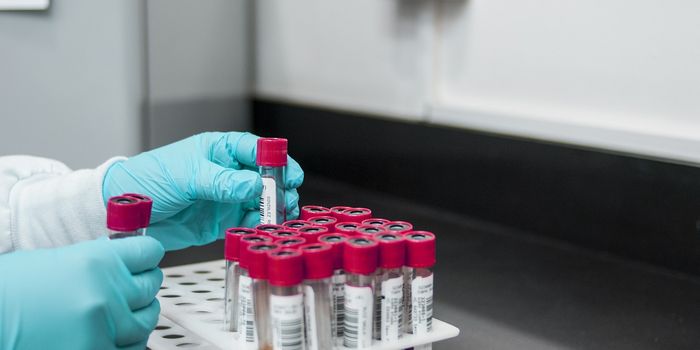An Antiviral Defense Mechanism That's Shared Across All Domains of Life
The microbes of the world have long been engaged in an 'arms race,' in which they battle for dominance. There are viruses that are known to infect bacterial cells, called bacteriophages, and recently, scientists have also found viruses that infect archaeal cells. Investigators have been able to use bacterial defense strategies in ingenious ways; the CRISPR gene editing technique is based on a kind of bacterial immune mechanism, which chops up viral invaders and incorporates the viral DNA into the bacterial genome as a kind of memory.
Now researchers have discovered another antiviral mechanism that microbes use. But incredinly, it shares similarities with antiviral mechanisms in other life forms. Scientists identified proteins expressed by bacteria and archaea, which are prokaryotes. These prokaryotic proteins can directly identify key portions of viruses, and trigger suicide in the infected prokaryote. This self-destruction can save a larger community of prokaryotic cells from further infection. The researchers noted that this recognition of critical viral proteins is seen across all domains of life, including bacteria, archaea, and eukaryotes, which includes all plants and animals. The findings have been reported in Science.
"This work demonstrates a remarkable unity in how pattern recognition occurs across very different organisms," said senior study author and Howard Hughes Medical Institute investigator Feng Zhang, a Professor at MIT, among other appointments. "It's been very exciting to integrate genetics, bioinformatics, biochemistry, and structural biology approaches in one study to understand this fascinating molecular system."
Since the potential of CRISPR was revealed, researchers have been searching bacterial and archaeal genomes for other defense systems. This team has previously identified thousands of candidate bacterial genes. In this work, they focused on a small number of these genes, which encode for enzymes that are part of a protein family called STAND ATPase, which are involved in the innate immune response in eukaryotes.
STAND ATPase proteins fight infections in humans and plants through pattern recognition, either in a pathogen or in a biochemical response to infection. The investigators wanted to know how they worked in bacteria.
In this study, the investigators exposed bacterial cells to bacteriophages, viruses that infect bacteria, and the bacteria survived after mounting a defense. To find the trigger that stimulated the bacterial defense, the researchers isolated the bacteriophage genes, delivering them to the bacterial cells one at a time. Two caused a response; genes encoding for the capsid shell of the virus that contains its DNA, and a motor that aids in viral assembly, called the terminus. Different STAND ATPases were activated by each trigger, protecting the host cell.
This was a striking finding, because bacterial cells usually detect viral DNA, viral RNA, or cell stress caused by the infection. In this case, however, bacterial proteins were sensing specific parts of the virus directly.
The researchers also found that bacterial STAND ATPase proteins can recognize dissimilar portal and terminase proteins produced by different phages. "It's surprising that bacteria have these highly versatile sensors that can recognize all sorts of different phage threats that they might encounter," said co-first study author Linyi Gao, PhD, a junior fellow in the Harvard Society of Fellows.
The STAND ATPase proteins in bacteria can also cut up bacterial DNA, acting as an endonuclease that stops the virus from spreading more. STAND ATPases in humans can also trigger cell death when human cells are infected by bacteria.
The universal nature of the mechanism behind these proteins is fascinating. "That's the most exciting part of this work," said co-first study author Jonathan Strecker, PhD, a postdoctoral researcher in the Zhang lab. "To see this across the domains of life is unprecedented."
Sources: Massachusetts Institute of Technology (MIT), Science









